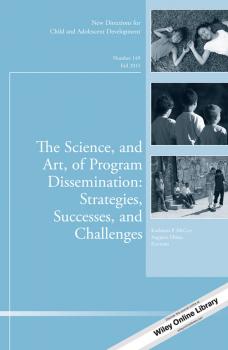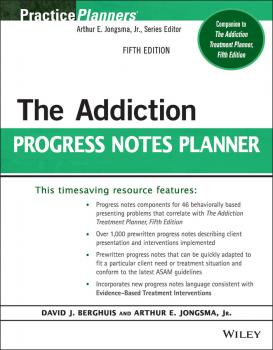Общая психология
Различные книги в жанре Общая психологияThe Portable Lawyer for Mental Health Professionals. An A-Z Guide to Protecting Your Clients, Your Practice, and Yourself
Everything you need to legally safeguard your mental health practice Fully revised, The Portable Lawyer for Mental Health Professionals, Third Edition identifies, explores, and presents solutions to both the simple and complex legal questions that mental health practices must deal with daily. Written by Thomas Hartsell Jr. and Barton Bernstein—attorneys and therapists specializing in legal issues concerning mental health—this essential guide arms professionals with the expert knowledge needed to avoid a legal violation, or to know how to handle a situation if a complaint is filed. With downloadable sample forms and contracts—including the new Informed Consent for Psychological Testing and Professional Limited Liability Member Agreement forms—this complete resource features step-by-step guidance, helpful case studies, and «legal light bulbs» to alert clinicians to warning signs and help them steer clear of legally questionable situations. New to the Third Edition: Coverage of how to conduct business in a digital world, including how to handle confidentiality issues surrounding electronic health records and cloud computing, distance therapy, and maintaining a professional client-therapist relationship in a Facebook world Vital information on a variety of associations' ethics guidelines A look at the Health Information Technology for Economic and Clinical Health (HITECH) Act Considerations for using or not using evidence-based treatments New information on working with minors and dealing with homicidal clients Convenient and comprehensive, The Portable Lawyer for Mental Health Professionals, Third Edition is the quick-reference resource that mental health professionals, graduate students, attorneys, and clients alike can rely on to make informed legal decisions.
Essentials of WJ IV Tests of Achievement
Complete coverage of administration, scoring, interpretation, and reporting Expert advice on avoiding common pitfalls Conveniently formatted for rapid reference The hands-on guide for confidently administering, scoring, and interpreting the WJ IV® Tests of Achievement Written by Nancy Mather and Barbara J. Wendling—two experts on the topic—Essentials of WJ IV® Tests of Achievement provides step-by-step guidance for administering, scoring, and interpreting the achievement portion of the WJ IV®.Designed to be an easy-to-use reference, the text goes beyond the information found in the WJ IV® test manual to offer full explanations of the tests and clusters on the WJ IV® ACH. This essential guide also explains the meaning of all scores and interpretive features and includes valuable advice on clinical applications and illuminating case studies. Essentials of WJ IV® Tests of Achievement contains: Concise chapters that feature numerous callout boxes highlighting key concepts, bulleted points, and 'Test Yourself' questions Separate chapter on the use and interpretation of the WJ IV® Tests of Oral Language and how the WJ IV® ACH and WJ IV® OL can be used together to increase diagnostic utility Expert assessment of the test's relative strengths and weaknesses This accessible resource highlights the most informative aspects of WJ IV® ACH, points out common errors, and reviews the complexities of administration and scoring the Woodcock-Johnson Tests of Achievement.
The Science, and Art, of Program Dissemination: Strategies, Successes, and Challenges. New Directions for Child and Adolescent Development, Number 149
Gain a greater awareness of the processes involved in the dissemination of evidence-based interventions, as well as existing supports that help disseminate and sustain them. Many interventions that aim to help children and adolescents are found to be efficacious every year, but program developers are often not equipped with the skills, knowledge, or tools to understand how to scale up a program or sustain it after the initial funding. Consumers (e.g., service providers, who are consumers of interventions), on the other hand, often do not understand all that goes into implementing and scaling up an intervention. This special issue: introduces readers to the problem, discusses some of the challenges with disseminating programs, and presents various supports that exist which can help scale up and sustain interventions. The authors’ goal is to promote the field of dissemination science by encouraging the sharing of successes and challenges. This is the 149th volume in this Jossey-Bass series New Directions for Child and Adolescent Development. Its mission is to provide scientific and scholarly presentations on cutting edge issues and concepts in this subject area. Each volume focuses on a specific new direction or research topic and is edited by experts from that field.
Integrating Expressive Arts and Play Therapy with Children and Adolescents
Praise for Integrating Expressive Arts and Play Therapy With Children and Adolescents «With this book, Drs. Green and Drewes have filled an important void in the play therapy literature, namely the integration of the expressive arts in play therapy with children and adolescents. They have assembled the best theorists and practitioners of the expressive arts and given them an appropriate structure to write their chapters. The book is outstanding and provides readers with in-depth case studies, detailed methodologies, research findings and is a useful resource for further training options. I recommend this book most highly for trainers, practitioners, and graduate students.» —John Allan, PhD, Professor Emeritus of Counseling Psychology, University of British Columbia, author, Inscapes of the Child's World «Brimming with chapters by 'oracles' from various disciplines, Green and Drewes' guidebook articulates essential competencies for the cross-disciplinary practice of play therapy and expressive arts therapies. Practical and timely, responsible and readable, it is an important resource for the mental health community and students who seek to work creatively with children. A significant contribution toward bringing professionals and professions together to learn from one another.» —Barry M. Cohen, MA, ATR-BC, founder, Expressive Therapies Summit, cofounder, Mid-Atlantic Play Therapy Training Institute Interventions and approaches from the expressive arts and play therapy disciplines Integrating Expressive Arts and Play Therapy With Children and Adolescents presents techniques and approaches from the expressive and play therapy disciplines that enable child and adolescent clinicians to augment their therapeutic toolkit within a competent, research-based practice. With contributions representing a «who's who» in the play therapy and expressive arts therapy worlds, Integrating Expressive Arts and Play Therapy With Children and Adolescents is the definitive bridge between expressive arts and play therapy complementarily utilized with children and adolescents in their healing and creative capacities.
The Addiction Progress Notes Planner
Save hours of time-consuming paperwork The Addiction Progress Notes Planner, Fifth Edition provides prewritten session and patient presentation descriptions for each behavioral problem in the Addiction Treatment Planner, Fifth Edition. The prewritten progress notes can be easily and quickly adapted to fit a particular client need or treatment situation. Saves you hours of time-consuming paperwork, yet offers the freedom to develop customized progress notes Organized around 44 behaviorally based presenting problems including depression, gambling, nicotine abuse/dependence, chronic pain, and eating disorders Features over 1,000 prewritten progress notes summarizing patient presentation, themes of session, and treatment delivered Provides an array of treatment approaches that correspond with the behavioral problems and DSM-5 diagnostic categories in The Addiction Treatment Planner, Fifth Edition Offers sample progress notes that conform to the latest ASAM guidelines and meet the requirements of most third-party payors and accrediting agencies, including CARF, TJC, COA, and the NCQA Incorporates new progress notes language consistent with Evidence-Based Treatment Interventions
New Directions in Peer Nomination Methodology. New Directions for Child and Adolescent Development, Number 157
Peer nominations provide a key method for assessing relationships, social status, and interpersonal behavior. Taking an in-depth look at current practices and recent advances in peer nomination methodology, this volume presents: a history of peer nomination methods, with a focus on the early origins of peer informant measures and the nature of Moreno's (1934) sociometric methodology (highlighting fundamental differences from the modern sociometric procedure). an overview of the major changes that have occurred in peer nomination research over the course of the past 2 decades, including the recent focus on popularity and relational aggression, statistical advances, logistical challenges and innovations, and the changing conventions of the nomination procedure itself. This is the 157th volume in this Jossey-Bass series New Directions for Child and Adolescent Development. Its mission is to provide scientific and scholarly presentations on cutting edge issues and concepts in this subject area. Each volume focuses on a specific new direction or research topic and is edited by experts from that field.
Identifying Perinatal Depression and Anxiety. Evidence-based Practice in Screening, Psychosocial Assessment and Management
Identifying Perinatal Depression and Anxiety brings together the very latest research and clinical practice on this topic from around the world in one valuable resource. Examines current screening and management models, particularly those in Australia, England and Wales, Scotland, and the United States Discusses the evidence, accuracy, and limitations of screening methods in the context of challenges, policy issues, and questions that require further research Up to date practical guidance of how to screen, assess, diagnose and manage is provided. Considers the importance of screening processes that involve infants and fathers, additional training for health professionals, pathways to care following screening, and the economics of screening Offers forward-thinking synthesis and analysis of the current state of the field by leading international experts, with the goal of sketching out areas in need of future research
Essentials of WAIS-IV Assessment
Quickly acquire the knowledge and skills you need to confidently administer, score, and interpret the WAIS®-IV Coauthored by Alan S. Kaufman, who was mentored by David Wechsler—the creator of the Wechsler scales—Essentials of WAIS®-IV Assessment, Second Edition is thoroughly revised and updated to provide beginning and seasoned clinicians with comprehensive step-by-step guidelines for effective use of the WAIS®-IV. This invaluable guide provides clinicians with a brand new interpretive process, overhauling its system of profile interpretation to be equally powerful across the entire WAIS®-IV age range. Like all the volumes in the Essentials of Psychological Assessment series, this book is designed to help busy mental health professionals quickly acquire the basic knowledge and skills they need to make optimal use of a major psychological assessment instrument. Each concise chapter features numerous callout boxes highlighting key concepts, bulleted points, and extensive illustrative material, as well as test questions that help you gauge and reinforce your grasp of the information covered. The new edition explores timely topics including gender and ethnic differences, as well as the role of the Flynn Effect in capital punishment court cases. Along with an accompanying CD-ROM containing scoring tables and case report material, the Second Edition includes information and advice on how to administer Q-interactive—the new digital version of the test—for administration of the WAIS®-IV via iPad®. Other titles in the Essentials of Psychological Assessment series: Essentials of Assessment Report Writing Essentials of WISC®-IV Assessment, Second Edition Essentials of WMS®-IV Assessment Essentials of Cross-Battery Assessment, Third Edition Essentials of WJ III Tests of Achievement Assessment Essentials of WJ III Cognitive Abilities Assessment, Second Edition Essentials of Neuropsychological Assessment, Second Edition
Treatment Strategies for Substance Abuse and Process Addictions
This distinctive and timely text examines the most prevalent substance and process addictions and focuses on current research and evidence-based treatment strategies. Major substance addictions discussed include alcohol, tobacco, marijuana, methamphetamines, and prescription drugs. Complete chapters are also devoted to the most frequently cited process addictions, making this text unique. Behavioral addictions covered in this text include pathological gambling, sex disorders, disordered eating, work, exercise, shopping, and Internet/gaming. Each chapter contains a listing of student learning outcomes, a case study with reflective questions, techniques for assessment and diagnosis, inpatient and outpatient treatment approaches, and resources for further study. With its emphasis on treatment strategies, this text can be used by practitioners as well as by professors in the classroom in introductory courses in addictions or in subsequent courses that focus on treatment strategies. *Requests for digital versions from the ACA can be found on wiley.com. *To request print copies, please visit the ACA website.
The Wiley Handbook of the Psychology of Mass Shootings
The Wiley Handbook of the Psychology of Mass Shootings gathers together the latest insights from research and practice in one timely and much-needed reference work. The first full-length academic examination of mass shootings from a psychological perspective Contains 21 essays written by a global team of experts Covers a broad range of topics, including the psychology of perpetrators, the role of the media, psychological considerations and clinical interventions for affected individuals, prevention, ethical issues, and areas for future research Provides best practices for clinicians, academics, and policymakers dealing with these increasingly prevalent incidents of violence









